My 75-year-old mother is dressed in a swimsuit and a hula skirt she has handmade from leaves and grasses collected from the side of the river. She’s swaying across the sandy beach at our campsite on night three of a six-day float of Idaho’s strikingly beautiful Middle Fork of the Salmon River. It’s talent show night, and her talent is: river fashion.
After my mom displays her various outfits (which includes one made from a drybag), it’s my 11-year-old daughter’s turn to go. She and a friend, dressed in PFDs and carrying paddles, march in unison to the beat of a makeshift drum, while twirling their paddles like batons. The talent? Marching band, obviously. The rest of us, seated in camp chairs, cheer and applaud, happily enjoying the evening’s entertainment.
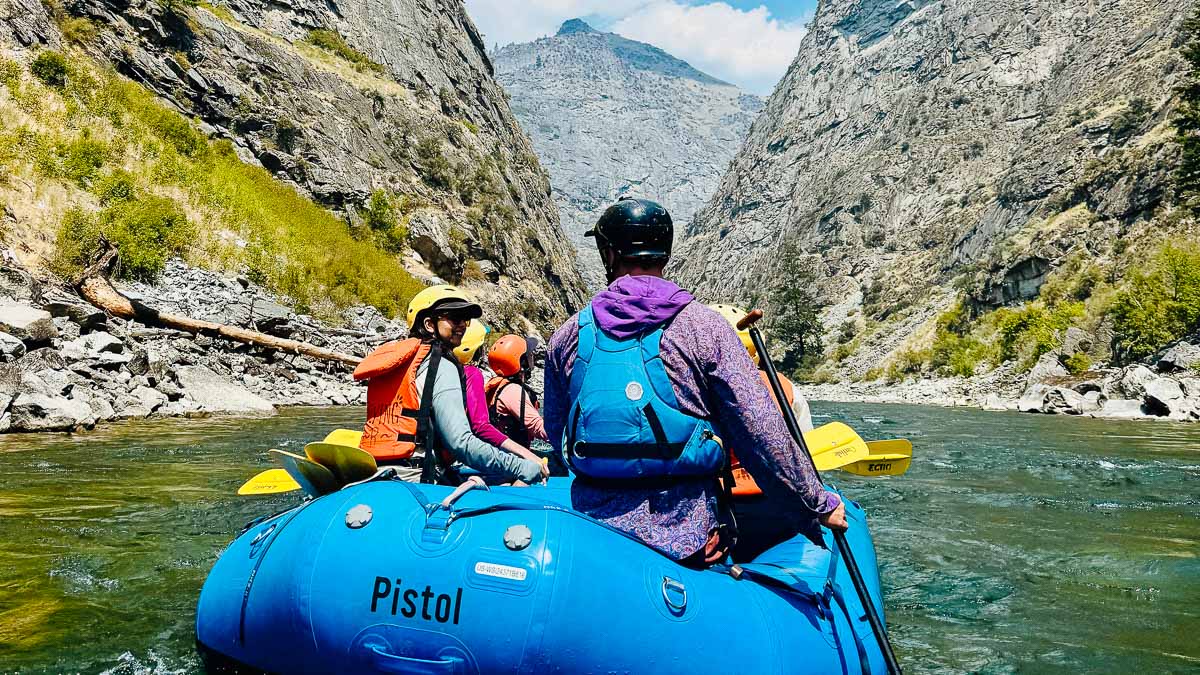
On a river trip, after a full day spent navigating rapids and enjoying the brisk pace of the river’s current, the evenings are a time to slow down. To soak it all in. From the moment you get to camp, when a hard-working guide strolls by with cold beverages on ice, you have this rare and beautiful opportunity to sit back and enjoy the stillness of it all, with no to-do lists, cell service, or deadlines.
It’s in these moments of down time that you truly appreciate the wild magic of this place, central Idaho’s vast Frank Church-River of No Return Wilderness, and the 100 miles of dam-free, Wild and Scenic-designated water that flows through it. This is the largest roadless wilderness in the Lower 48, a 2.3-million-acre swath of rugged mountains that make you feel like you’re part of something bigger than yourself.
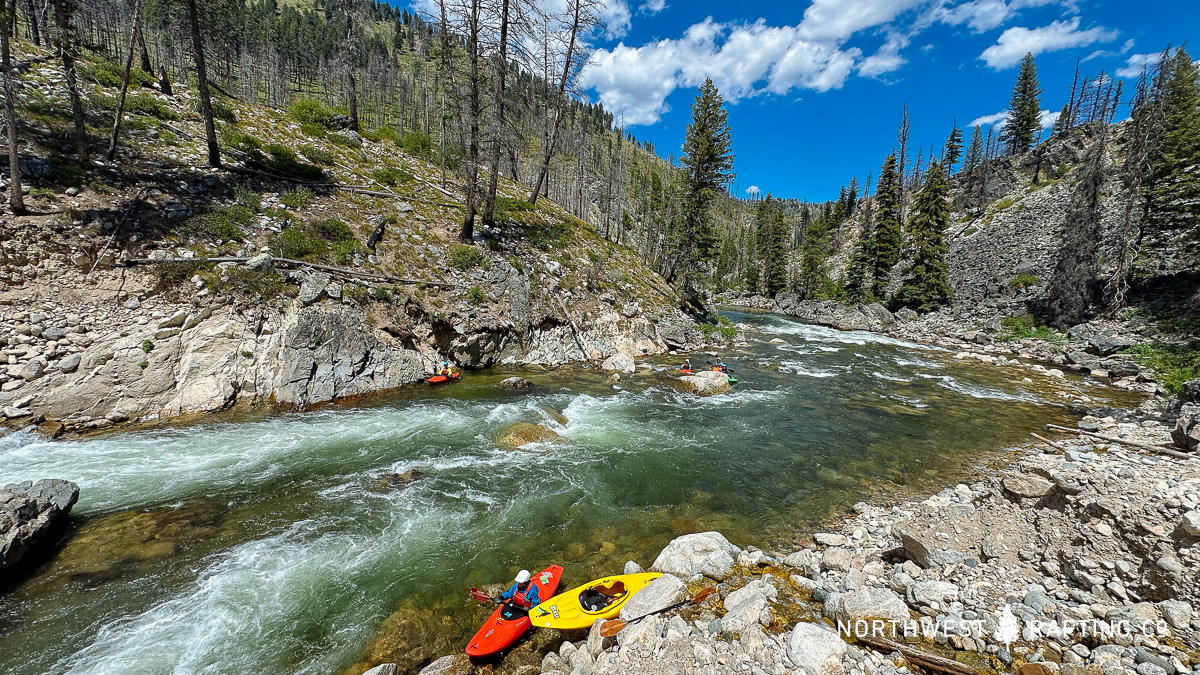
Looking back, a few months later, I see it clearly now: This was the best full-family adventure trip I’ve ever taken. And that’s saying something, as I’ve been fortunate enough to take a lot of incredible trips. Skiing in Colorado and BC. Summer getaways on a picturesque lake. Multi-day river trips from the Rogue to the Grand Canyon. Road trips through the mountain west and biking and running in the desert southwest; hut trips into the backcountry. I became a travel and outdoors writer mostly because these wanderings under open skies have shaped my life. Nights spent in a tent and days spent on a river or a trail are the ones that stuck with me the most and made me who I am.
It all started with my mom. Evans is her name, a lifelong adventurer who can’t stay indoors for long—biking, skiing, camping, paddling, she’s into it all. She was a Class V whitewater kayaker for decades during my childhood, but these days, she’s hung up her spray skirt in exchange for rafting trips where everyone is invited. Most of all, she loves sharing her favorite wild places with the next generation. She’s the one who introduced my sister’s son to the joy of jumping off cliffs into the water below (Ben is now kind of a big deal in the niche world of cliff jumping, but that’s another story) and she got her other grandson into kayaking—at 17, he paddled the Middle Fork in his own kayak. My kids, who are now 9 and 11, have grown up floating down remote rivers in inner tubes, following Nana through mellow rapids.
Which brings me back to the Middle Fork. When my kids were little, my mom always promised, “When they’re old enough, we’ll do the Middle Fork of the Salmon.” It felt like a rite of passage, a landmark trip we’d take together once they’d matured enough to handle a steady stream of Class III rapids. Last summer, it was go time.
My mom booked a full-family float of the Middle Fork with Northwest Rafting Company, timed with her 75th birthday, and she rallied her whole crew, including my brother and sister and some of her kayaking buddies from back in the day. On the river, we are an eclectic, multi-generational flotilla: septuagenarians (and one 17-year-old) in kayaks, college kids in duckies, elementary schoolers in paddle rafts. Everyone having a damn good time.
Each day, we tackled the day’s miles with curiosity of what lies around the river bend. We started with a steep passage from the put-in at Boundary Creek, dropping 25 miles of non-stop rapids until we reached Indian Creek, where the canyon mellows in grade and offers riverside hot springs, tumbling wave trains, and scenic side hikes along a meandering trail. Every day brought new scenery and adventures but the same lovely routine: rise, paddle, explore, rest.
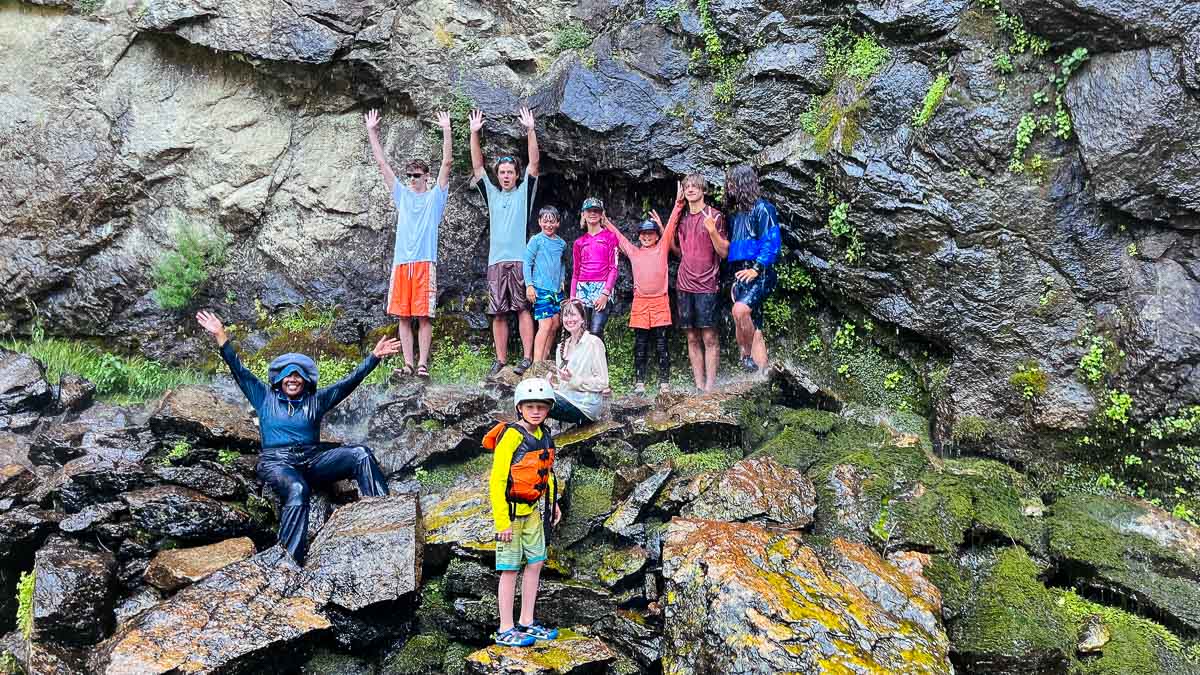
Our multi-talented guides from Northwest Rafting Company—experts at everything from rapid maneuvering and flora and fauna knowledge to backcountry baking and card tricks—started each day with a coffee bell, a stretch circle, and a few hints about the fun yet to come. We visited historic petroglyphs created by the Tukudika, the nomadic Shoshone people who once lived in this area. We crossed through high-desert plains and burned forests before eventually landing in the Impassable Canyon, the third-deepest gorge in the U.S. and the most dramatic section of the river. By day, we spotted bighorn sheep scuttling along the cliffsides, cutthroat trout slipping quietly underwater, and bald eagles diving through the air above. By night, we gazed at the stars, a brilliant smattering of sparkling lights overhead.
You didn’t need to be a veteran river goer to appreciate the magic of it all. My brother’s friend Kim, who’d never slept outdoors or been on a river before, was in awe each day. As we scrambled up side hikes and splashed through rapids and sat around the campfire telling stories each night, I would look over at Kim and it was like a curtain had been raised. She was seeing a whole other side to the world she thought she knew.
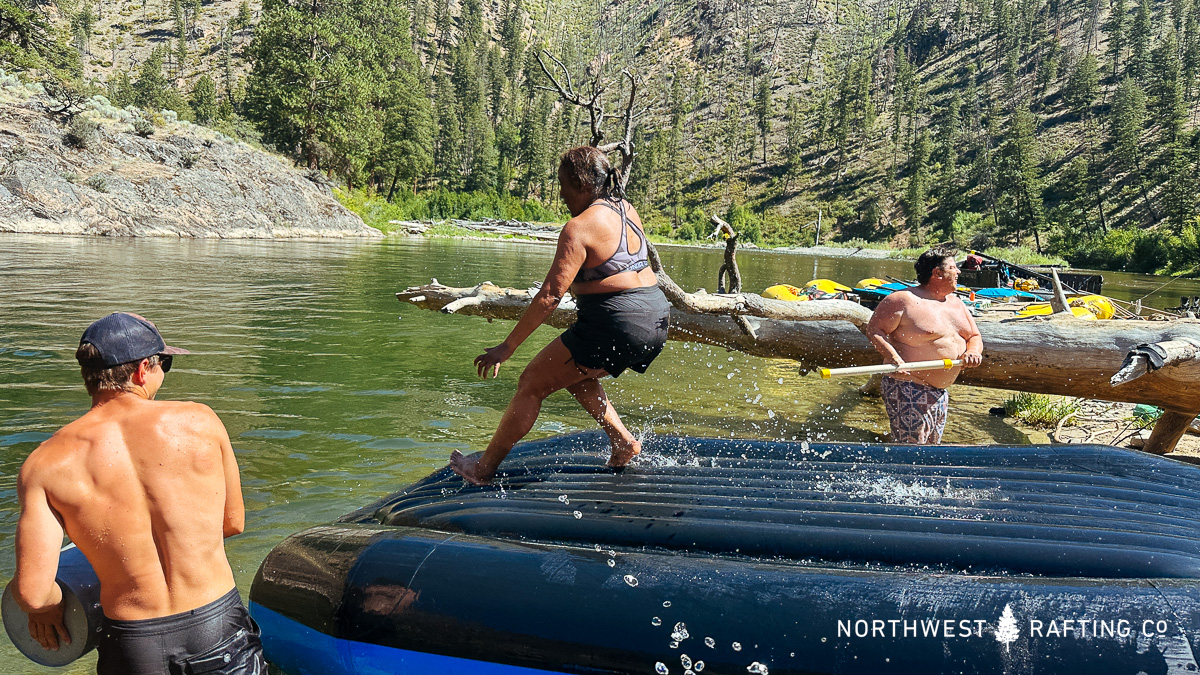
What I loved most about the trip: disconnecting and connecting at the same time—reading a book at camp, looking at the trees and the gushing river instead of staring at a screen, and having real conversations with people free of distraction. What my mom loved: going on a vacation where she didn’t have to plan anything. Our guides cooked us delicious meals for days, ushered us safely down the river, and organized outings and activities for all ages at camp.
And my kids? They loved everything about life on the Middle Fork (except maybe the groover), but it was the little moments that stuck with them the most. When I asked them afterward about their favorite parts, they didn’t mention the big rapids of Tappan Falls, or the time Nana flipped her IK in Cramer Creek, or the s’mores we cooked over the fire on the last night. What stood out to them the most is when our guides turned a raft upside down at camp one afternoon and created an impromptu slip-n-slide with a bucket of river water. Or when their older cousins showed them how to stand under the hot springs shower until their wetsuits filled and expanded with hot water. They talked about the waterfall at Veil Falls we hiked to and the dress-up night, where the guides pulled out a drybag full of costumes to share and cranked up the party tunes.
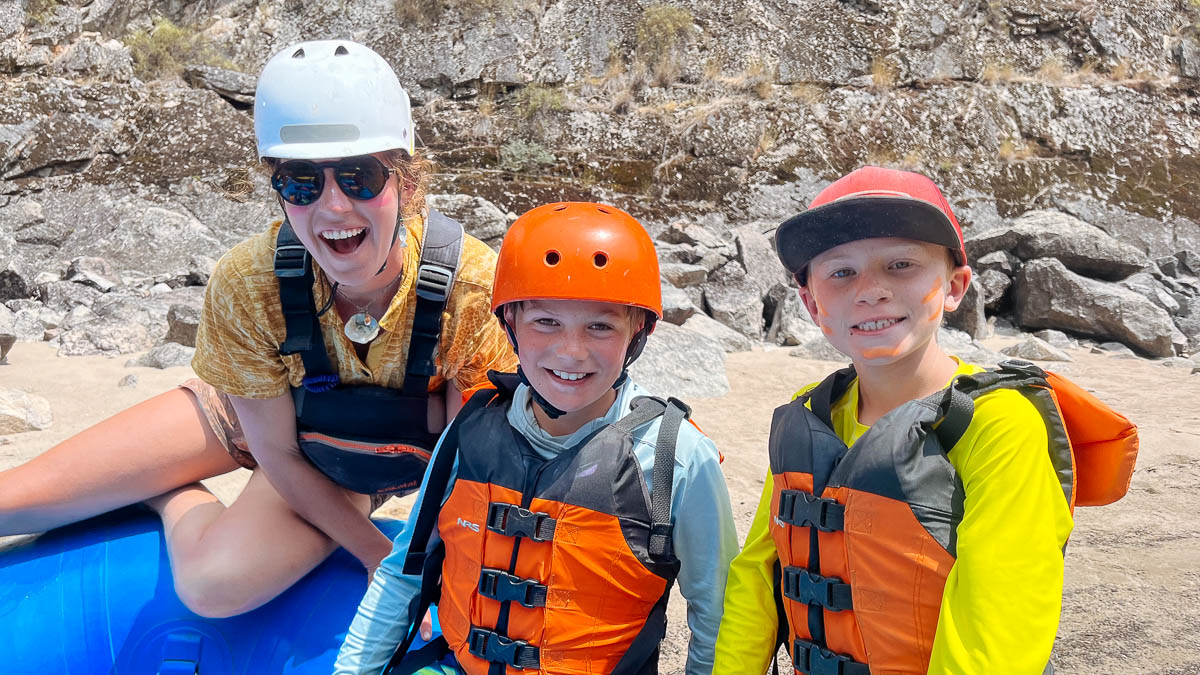
When we reached the take-out at Cache Bar, I didn’t want to get out of the raft. Seeing cars for the first time in a week gave me a pang of sadness. Who needs civilization when you have everything you need and everyone you love on this big blue raft? I wanted to keep drifting downstream, to continue our journey and preserve this self-contained floating village we’d created. I wanted to stay with my newfound river family—these people I know better than I did a week ago. But every good trip must come to an end. It’s time to book the next one, I guess.